Share the post "Soccer Rules No One Knows (Surprising, Weird, and Dumb)"
Soccer fans will be familiar with the well-known rules of soccer, like handball. But what about the soccer rules? No one knows?
We will examine the weird and strange soccer rules that cause even the most dedicated fan confusion. Some rules fly under the radar, as well as the more familiar rules. Let’s take a look at 10 soccer rules no one knows.

Soccer Rules No One Knows
1. No corner flags, no game
A soccer game won’t start if there are no corner flags.
- This happened in the 1974 World Cup final. The referee delayed the game between Germany and Holland. The staff had forgotten to put the corner flags on the field.
Once the corner flags were in their rightful place, the game started.
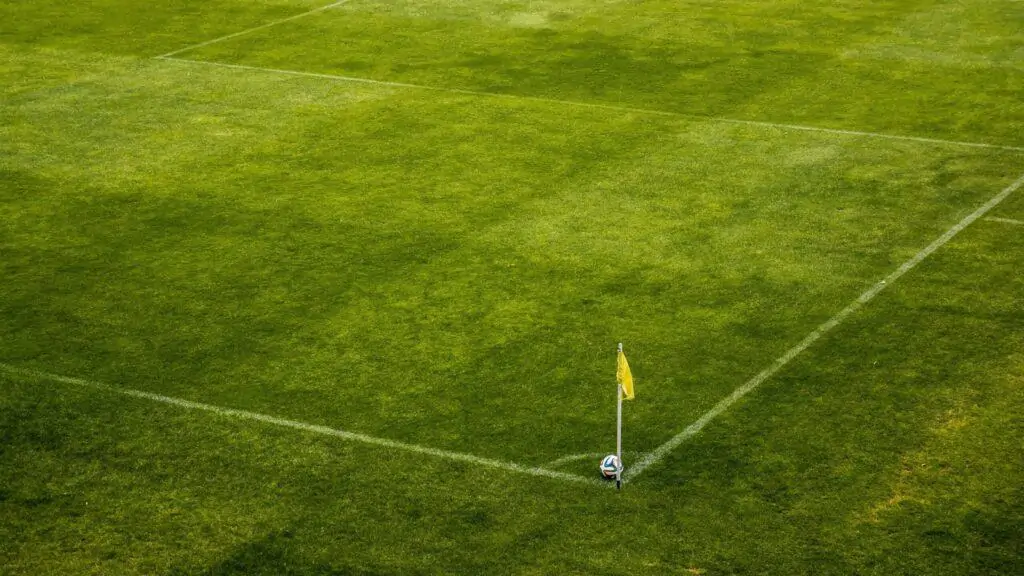
2. You can’t score a goal directly from a throw-in
It won’t be a goal if you throw the ball directly into the goal. Directly means that no other player touches the ball. So, as long as the ball doesn’t touch any other player, it won’t be a goal. A throw straight into the goal, without touching any player, will be given a goal kick for the goalkeeper.
This rule is for those long throwers out there. Hold off on the celebrations if you get a goal from that long throw-in.

3. A goal kick doesn’t have to leave the 18-yard box to be in play
On a goal kick, the ball doesn’t have to leave the 18-yard box to be in play. The ball is in play once the goalie touches it and moves position. This is different from the old rule where the ball had to leave the 18-yard box to be in play.
The newer rule has impacted the game. It suits teams that like to build play from the back. But it can also help forwards.
- Think of it this way. You’re a forward waiting outside the box for the goalie to take a goal kick. The goalie miskicks the ball, and it doesn’t leave the 18-yard box. You run in and shot the ball into the goal.
Is the goal allowed? Yes, because the ball was in play from the goal kick once it moved position. Under the old rule, the goal would’ve been disallowed because the ball didn’t leave the 18-yard box.
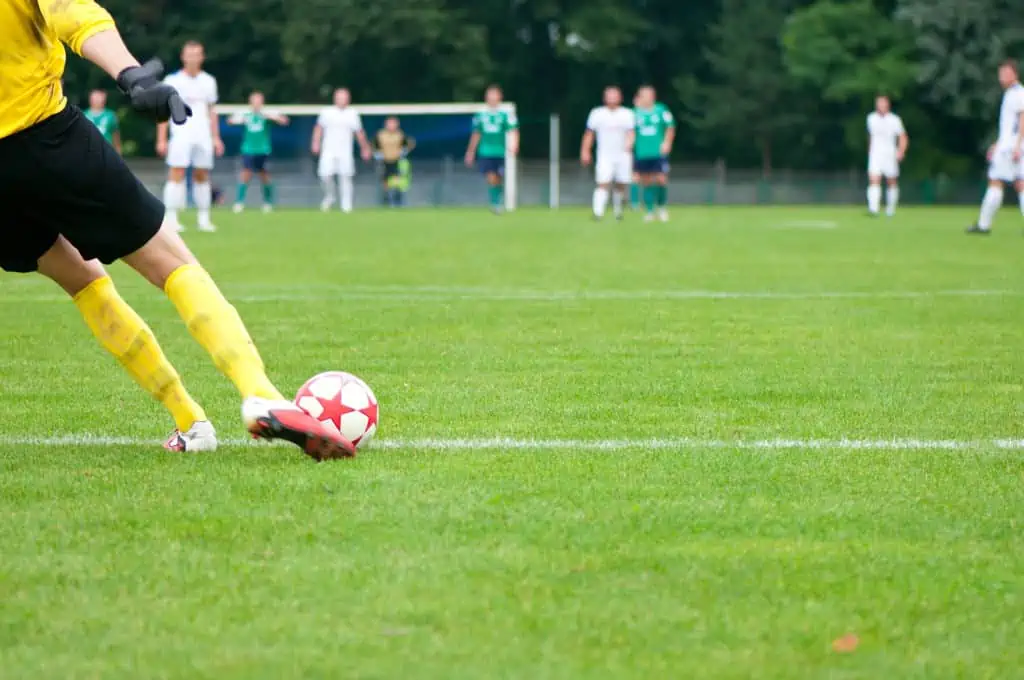
4. Goalkeepers can only hold the ball for 6 seconds
Goalkeepers can only have the ball in their hands for 6 seconds. The rule stops goalies from wasting time by holding the ball too long.
- This rule helped the US women’s soccer team in their game against Canada at the 2012 Olympic Games. Canada led 3-2.
In the 78th minute, the referee ruled that Canada’s goalie held the ball for over 6 seconds. An indirect free kick was given. And that led to a penalty after a handball. The US went on to win the game in overtime. So, this rule can change the course of a game.

5. When goalies release the ball, they can’t lift it again
A goalie can’t catch the ball, release it on the ground, and lift it again.
- You’re a goalie. A shot comes in. You catch the ball in your hands and then release the ball on the ground. An opposing player runs towards the ball, so you pick it up again.
What happens? The referee blows the whistle and gives the opposing team a free kick. So, goalkeepers, don’t lift the ball after releasing it. You’ll provide the opposition with a cheap free-kick.
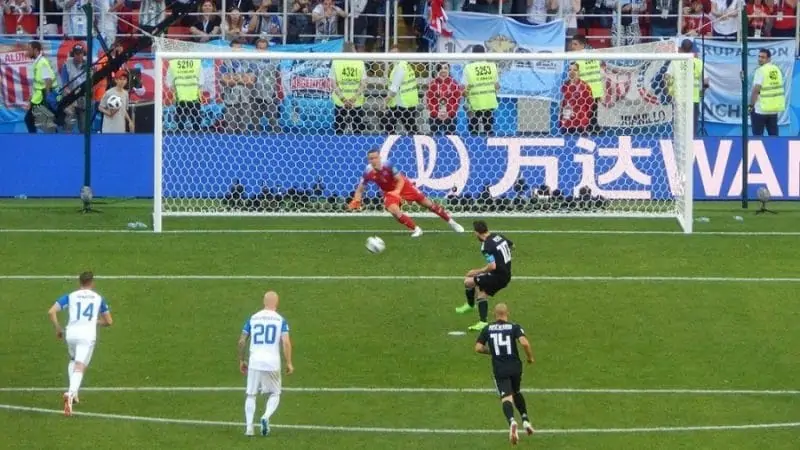
6. You can pass from a penalty
That’s right; you can pass the ball to a teammate from a penalty kick. Passing from a penalty can be a good way to catch the opposition off guard.
- A game between Barcelona and Celta Vigo is a good example of this. Lionel Messi stepped up to take a penalty and passed it for Luis Suarez to score.
It would be best if you were careful with this one, though. It can go wrong, as it did for Robert Pires and Thierry Henry.
7. You can’t touch the ball twice from a penalty
From a penalty, you can’t touch the ball twice. So, you can’t take a touch and then shoot the ball into the goal. A penalty must be taken with one touch, the shot. Even if you shoot and the ball hits the frame and comes back, you can’t touch the ball a second time.
For instance, you take a penalty. The ball hits the frame and bounces back to your feet. You slot in an easy rebound. But it’s not a goal because you touched the ball twice.
- In a different scenario, you take a penalty, and the goalie touches the ball onto the frame. The ball bounces back to your feet.
You score an easy rebound. This goal is because the goalie touched the ball after your first touch.
8. You can’t set up your back pass
You can’t set up your back pass to the goalie. When watching soccer, you’ll often see players back pass to the goalie with their head or chest. It’s within the rules for the goalie to take the ball in the hands.
You might think it’s a good idea to set up your back pass. You flick the ball and head/chest it back to the goalie. But this isn’t allowed. In 2017, Inter Milan’s Ivan Perisic was in his 18-yard box. He flicked the ball up and headed it back to his goalie. This is against the rules.
The referee awarded the opposing team a free kick and gave Perisic a yellow card.
9. Foreign objects touching the ball are deemed interference
If an object like a bottle or balloon is on the field and touches the ball, it’s interference with play. The referee should stop playing and remove the object. Sometimes this type of interference can happen at a crucial time. And it can cost a team a goal if the referee makes a mistake.
In 2009 an English Premier League game, Darren Bent shot the ball against a beach ball and scored a goal.
The beach ball interfered with the play. But the referee incorrectly gave the goal. This is an infamous case of a foreign object interfering with play.
10. Celebrations can still be penalized even if a goal is ruled out
It’s true, you can be penalized for a goal celebration even if the goal gets ruled out. This could happen more often now with video assistant referees (VAR).
- Picture this. A player scores the winning goal and starts celebrating. The player removes their jersey and holds it above their head for the fans. Such a celebration can be penalized with a yellow card.
But wait, the goal will be checked by VAR. Afterward, the goal is ruled out for offside. Then the referee approaches the player who celebrated and books them for removing their jersey—a yellow card for celebrating a goal that didn’t even count.
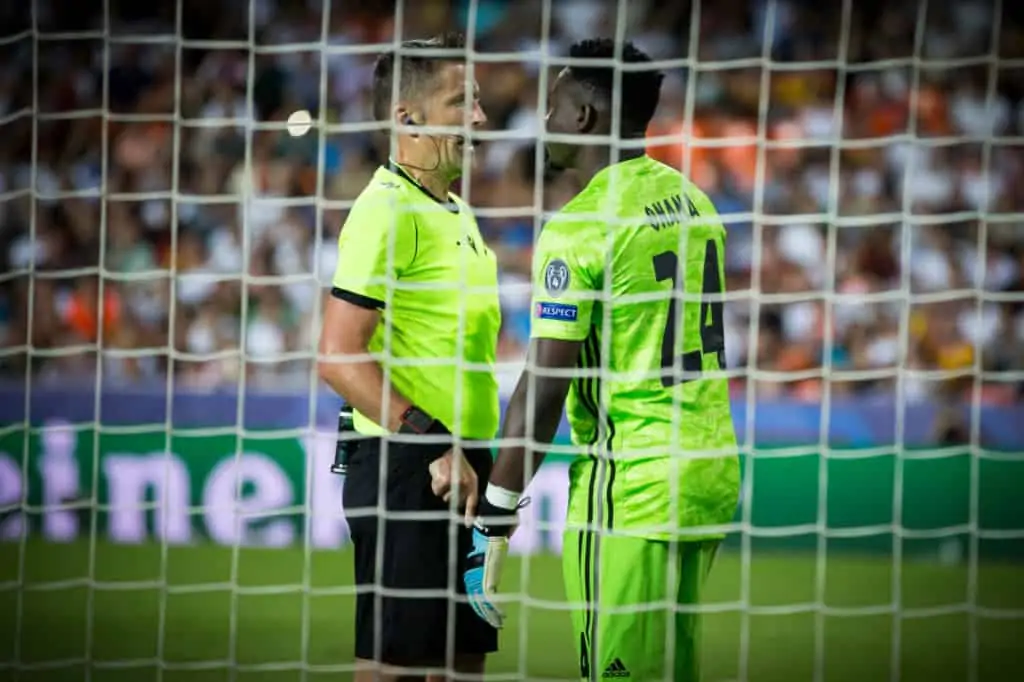
11. Injury by a Teammate
In soccer, if a player is injured by their teammate and the referee stops play to attend to the injury, the game is resumed with a dropped ball. This rule ensures fairness, as stopping play for an injury caused by a teammate does not result from a foul or infringement by the opposing team.
The dropped ball is a neutral and fair way to restart play. It involves the referee dropping the ball at the location where it was last played before the stoppage. Any player can take possession of the ball after it touches the ground.
This rule maintains the spirit of fair play, ensuring that neither team gains an undue advantage from an injury stoppage caused by a teammate.
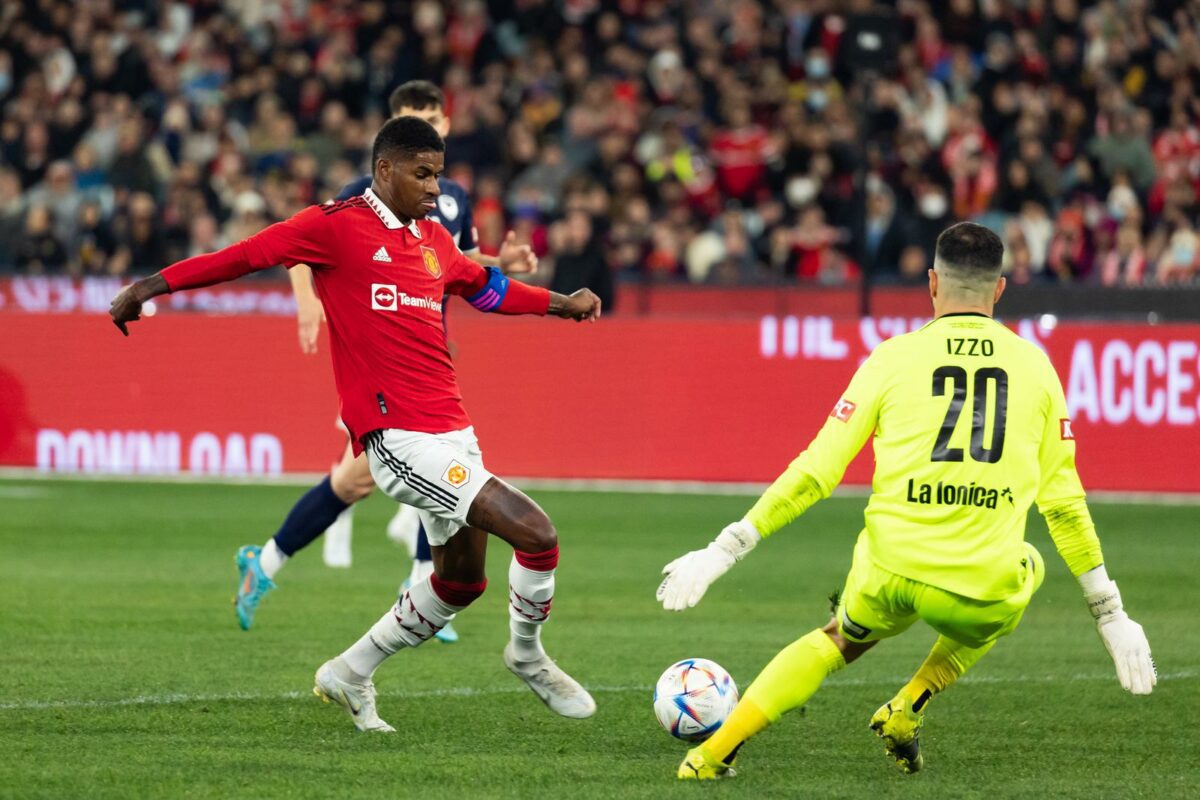
12. Changing the Ball
The ball can be changed during a soccer match, but this can only happen with the referee’s permission. This rule is in place to ensure the continuity and integrity of the game.
The need to change a ball could arise due to damage, deflation, or other issues affecting its suitability for play. The referee can inspect and approve the new ball, ensuring it meets the required size, weight, and pressure standards.
This rule prevents any potential for teams to gain an advantage by using a ball that suits their style of play or strategy, maintaining the fairness and standardization essential in the sport.

13. No Jewelry
Soccer players are not allowed to wear jewelry during a match. This includes necklaces, bracelets, earrings, rings, and other decorative items. The primary reason for this rule is safety.
Jewelry can pose a risk of injury to the wearer and other players. For example, a necklace could get caught during play, or a ring could inadvertently scratch an opponent. Referees strictly enforce this rule and check players for jewelry during pre-match inspections.
The removal of jewelry is a precautionary measure to prevent injuries and ensure the safety of all participants on the field.
14. Goalkeeper Jersey
The goalkeeper must wear a jersey color that distinguishes them from the outfield players of both teams and the referee. This rule is crucial for clear identification during the game.
The distinct jersey helps players, referees, and spectators quickly identify the goalkeeper, especially in crowded or fast-moving situations. This distinction is important because the goalkeeper has unique privileges, like handling the ball within their penalty area.
A distinguishable jersey ensures that these privileges are correctly administered and that the game’s flow is not disrupted by confusion over player roles.
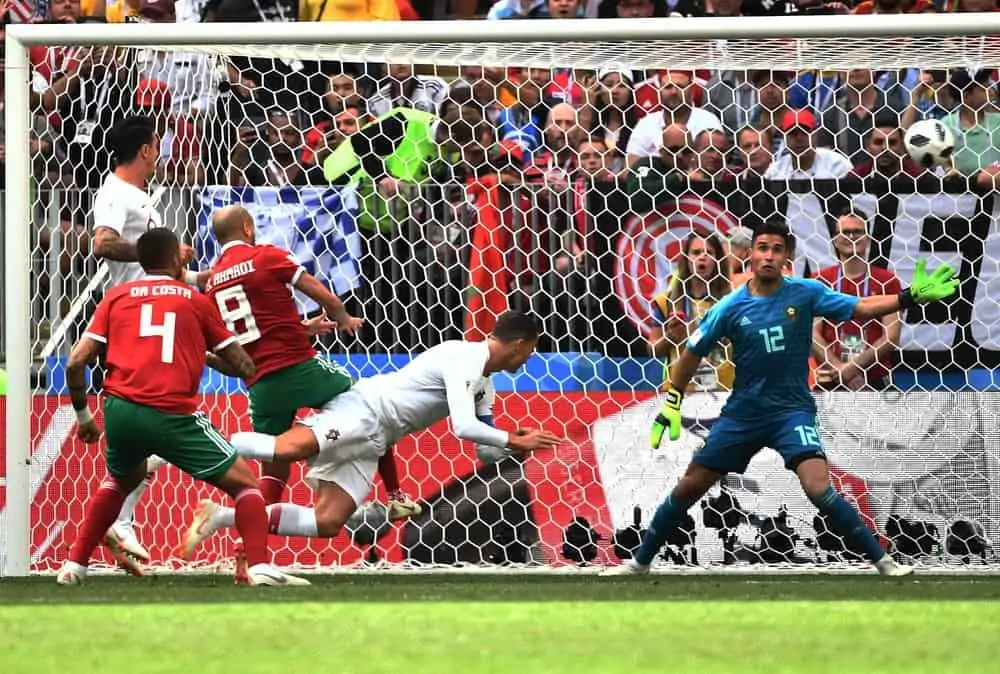
15. Ball In and Out of Play
The rule regarding the ball being in and out of play is fundamental in soccer. The ball is considered out of play when it has wholly crossed the goal line or touchline, either on the ground or in the air.
This rule is essential for determining goals, corner kicks, goal kicks, and throw-ins. A goal is scored if the ball crosses the goal line within the goalposts and under the crossbar. If it crosses the goal line but not between the goalposts, a goal kick or corner kick is awarded, depending on which team last touched the ball.
Similarly, if the ball crosses the touchline, play is restarted with a throw-in to the team that did not touch the ball last. This rule is fundamental in restricting the field of play and is crucial for the structured flow of the game.

Weird Soccer Rules
Now that we’ve looked at 10 rules, no one knows, let’s look at weird soccer rules. Some of these might not happen often, but the rules exist. Let’s take a look at 5 weird soccer rules.
1. You can’t score an own goal from a free-kick
Yes, an own goal can’t be scored from a free kick. If a player taking a free kick passes back to the goalkeeper, and the ball goes into the goal, a goal won’t be given.
That is, as long as no other player, except the free-kick taker, has touched the ball. If a player hits a free-kick directly into their own goal, a corner will be given to the opposing team.
As previously mentioned, it means no other player touched the ball. So, it’s impossible to score an own goal now from a free-kick.
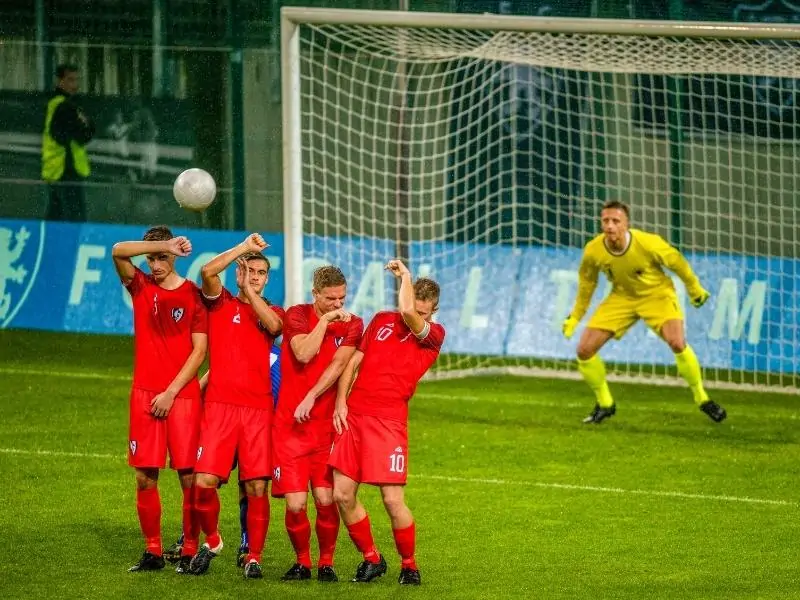
2. You can’t score an own goal from a throw-in
It’s impossible to score an own goal directly from a throw-in. As with the free-kick, a corner will be given to the opposing team if a player throws the ball directly into their own goal. But again, now is an important part here. If any other player touches the ball, the goal will count.
Take this goalie mistake as an example. If he hadn’t touched the ball, the goal wouldn’t count. It would’ve been a corner kick to the opposition team.
3. If a player refuses to be substituted, the Game will continue
A player can refuse to be substituted, and the game will continue. It’s almost unbelievable, but it’s true. Chelsea goalkeeper Kepa Arrizabalaga refused to come off the field in the 2019 Carabao Cup final. And, of course, the manager Maurizio Sarri was furious.
Although the game continued without punishment for the goalie, he was fined by Chelsea later. This is an example of what not to do when being substituted. It’s disrespectful to the team and the teammate coming on. Kepa rightly apologized to his team and his teammates.
4. Undershorts must be the same color as kit shorts
Shorts worn under the kit shorts must be the same color as them. Many players wear shorts under their kit shorts. If they do, the undershorts must match the color of the kit shorts.
This is a weird rule, but it also has a purpose. It’s so the players don’t get confused by different colors.
- Soccer is a fast game. Often, players only get time to glimpse at their teammates before passing the ball. If they see another color, it could confuse them.
The player might pass the ball to the opposing team. So, although weird, this rule makes sense.
5. You can be sent off before the game even starts
Yes, you can be sent off before the game starts. It sounds weird, but it’s true. This happened to French defender Patrice Evra before a Europa League game. Before kick-off, Evra argued with his fans and tried to kick one of them!
The referee gave Evra a red card before the game started! Luckily for his team, this was before kickoff, which meant the team could replace Evra with another player.
It may be weird, but you can be sent off before the game starts.

Ball Hitting a Referee
In soccer, if the ball touches the referee and this contact results in a change of possession or a promising attack, the play is stopped and restarted with a dropped ball. This rule, introduced to maintain fairness, addresses situations where unintentional interference by the referee could significantly impact the game’s flow.
For instance, if the ball hits the referee and falls to the opposing team, leading to a loss of a clear scoring opportunity, it would be unfair to the team that was in possession. By stopping play and restarting with a dropped ball, the game ensures that no team gains an unfair advantage or suffers a disadvantage due to such accidental interference.
The dropped ball is performed at the location where the ball touched the referee, and any player can contest it after it touches the ground.
No Goals on a Dropped Ball
According to soccer rules, a goal cannot be scored directly from a dropped ball until it has touched at least two players. This rule is in place to prevent teams from gaining an unfair advantage during a restart of play with a dropped ball.
If a player attempts to score directly from a dropped ball without it being touched by another player, the goal is disallowed. In such a case, if the ball enters the opponent’s goal, a goal kick is awarded, and if it enters the team’s own goal, a corner kick is awarded to the opposing team.
This rule ensures that the dropped ball serves its purpose as a fair and neutral method to restart play after a stoppage rather than being exploited as a direct scoring opportunity.

Throw-In Technique
For a throw-in to be valid in soccer, the ball must be thrown from behind and over the head using both hands. This technique is strictly enforced to ensure fairness and consistency in how the ball is returned to play.
The player taking the throw-in must have both feet either on the touchline or on the ground outside the touchline and must not lift their feet off the ground until the ball is released. The throw-in is awarded to the opposing team of the player who last touched the ball before it crossed the touchline.
This rule is crucial as it allows the game to flow smoothly after the ball goes out of play, and it also provides an opportunity for teams to regain possession or launch an attack.
Penalty Kick Order
During a penalty shootout in soccer, teams are not required to follow the same kicking order. This rule allows for flexibility and strategy in deciding the order of penalty takers. Traditionally, teams alternate shots, but they can change the sequence of their designated shooters as the shootout progresses.
This flexibility can be used for tactical reasons, such as saving the best penalty takers for potentially crucial later kicks or adjusting the order based on the shootout’s progress. The team’s coach or manager typically decides on the order of penalty takers, which can be a critical factor in the outcome of a match that is decided by a penalty shootout.

Dumb Soccer Rules
There are some dumb rules in soccer. It’s an old game with many rules, so it’s unsurprising that some of them are dumb. Now that we’ve gone through soccer rules no one knows and weird soccer rules, let’s look at three dumb soccer rules.
1. The offside rule is dumb
According to some people, the offside rule is dumb. This is a very controversial debate in the world of soccer. Dutch legend Marco Van Basten is opposed to the offside rule. In a recent interview with Sky Sports;
‘he’s ‘convinced that it is not a good rule’ and ‘that [soccer] would be better without it.‘
Van Basten
So, even high-profile people in soccer think the offside rule is dumb. Without offside, they think the game would be more interesting and exciting.
But there’s controversy surrounding the removal of the offside rule. Some say that it’d destroy soccer as we know it. So, if you think the offside rule is dumb, don’t get your hopes up for its removal.
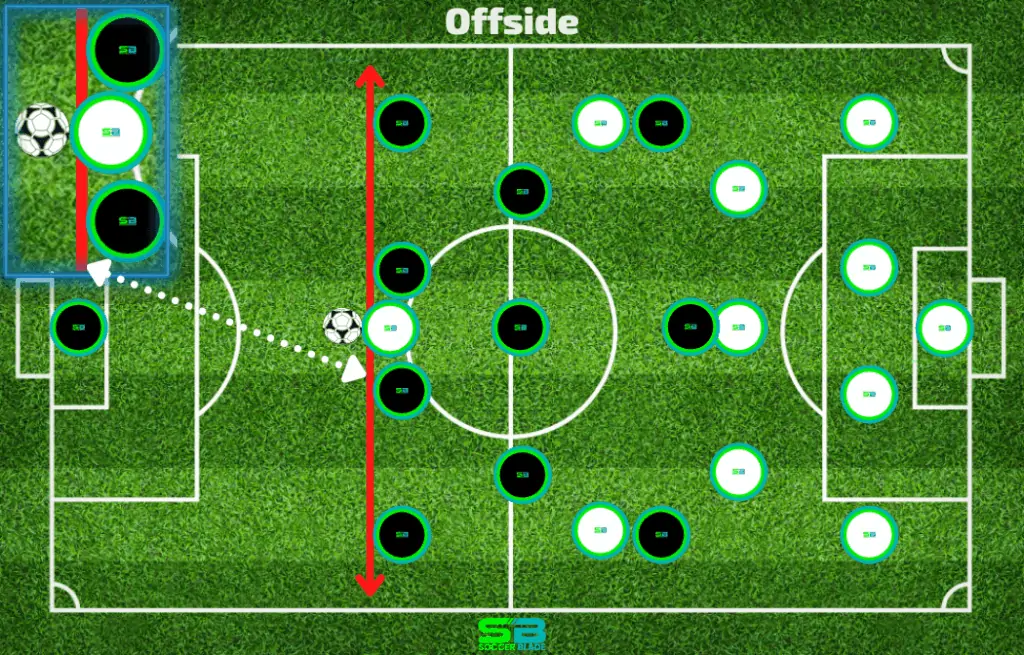
2. Throw-ins are dumb
Throw-ins are a pretty dumb rule in soccer. They’re the only time outfield players can touch the ball with their hands. Many people involved in soccer want the game to move faster. But throw-ins waste a lot of time.
Players particularly take a lot of time over throw-ins when their team is leading. This isn’t good for the fans.
- Replacing throw-ins with a kick-in would be much better. There’d have to be a time limit set on the kick-in. But a kick-in could be done faster than a throw-in.
This would keep the game moving, which is more exciting for fans. Unlike removing the offside rule, changing throw-ins is much more likely.
3. Away goals are dumb
The away goals rule in soccer is dumb. Fans have likely seen this rule in the UEFA Champions League or Europa League.
- After two games, if the teams are level, say 3-3, the team with more away goals will advance to the next round. An away goal is when a team scores at the opposition team’s stadium.
So, picture a team winning 1-0 in their away game, giving them one away goal. In the return game, they lost 3-2 at their stadium. That makes the team’s level at 3-3. But the other team now has 2 away goals.
Under the away goals rule, the team with 2 away goals will advance to the next round. That’s dumb. A goal shouldn’t have more power just because it was scored in the other team’s stadium.
Also, the away goals rule means sometimes teams will sit back and defend an away goal. This can make soccer less exciting—another reason why away goals are dumb.
- Update: From season 2021/22, away goals for the ECL will no longer be in effect. The rule was originally in place because of the different standards of the playing field – but now all competing teams are at a great standard.

Indirect Free Kicks for Back Passes
The rule regarding indirect free kicks for back passes in soccer often sparks debate. According to this rule, a goalkeeper is not allowed to handle the ball with their hands if it has been deliberately kicked to them by a teammate.
If the goalkeeper handles the ball in such a situation, the opposing team is awarded an indirect free kick from where the goalkeeper touched the ball. This rule was introduced to discourage time-wasting and negative play, such as a team constantly passing the ball back to their goalkeeper to hold onto it.
The enforcement of this rule encourages more open play and reduces the potential for teams to stall the game excessively. However, it can lead to contentious situations, especially when the intention behind a back pass is unclear or the goalkeeper reflexively handles the ball.
Booking for Removing Jersey
The rule that leads to players receiving a yellow card for removing their jersey during a goal celebration is often seen as excessive by many fans and players. This rule was implemented by FIFA in 2004 as part of the Laws of the Game.
The rationale behind this rule is to maintain discipline and order during matches and to prevent excessive time-wasting during celebrations. Additionally, it aims to avoid potentially offensive or political messages that players might display on undershirts.
However, critics argue that this rule dampens the spontaneous joy and excitement of scoring a goal. Celebrations are a significant part of the emotional experience of soccer, and many feel that penalizing players for expressing their joy in this manner is overly harsh.
The Triple Punishment Rule
The “Triple Punishment” rule in soccer refers to a player committing a foul that denies an obvious goal-scoring opportunity, resulting in a penalty kick, a red card, and a subsequent suspension. This rule has been a subject of criticism and debate due to its perceived severity.
Critics argue that it excessively punishes the infringing player and team, as it not only gives the opposing team a significant chance to score but also reduces the fouling team to ten players, resulting in further punishment through suspension. Recognizing these concerns, FIFA and the International Football Association Board (IFAB) modified the rule in 2016.
The amendment states that if the foul in the penalty area is an attempt to play the ball, the offending player should only receive a yellow card instead of a red, thus reducing the severity of the punishment. This change aims to balance the need for discipline with the overall fairness of the game.
That’s enough weird and dumb soccer rules – but now you know!
Share the post "Soccer Rules No One Knows (Surprising, Weird, and Dumb)"
Joel is a seasoned soccer journalist and analyst with many years of experience in the field. Joel specializes in game analysis, player profiles, transfer news, and has a keen eye for the tactical nuances of the game. He played at various levels in the game and coached teams - he is happy to share his insight with you.



